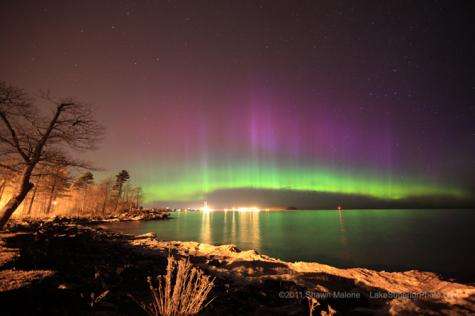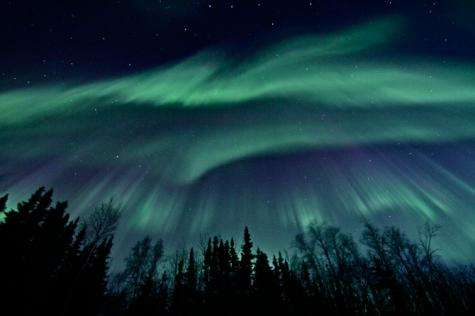Geomagnetic storm subsiding

A geomagnetic storm that sparked auroras around the Arctic Circle and sent Northern Lights spilling over the Canadian border into the United States on April 12, 2011 is subsiding. NOAA forecasters estimate a 25% chance of more geomagnetic activity during the next 24 hours.
What is a geomagnetic storm?
The Earth's magnetosphere is created by our magnetic field and protects us from most of the particles the sun emits. When a CME or high-speed stream arrives at Earth it buffets the magnetosphere. If the arriving solar magnetic field is directed southward it interacts strongly with the oppositely oriented magnetic field of the Earth. The Earth's magnetic field is then peeled open like an onion allowing energetic solar wind particles to stream down the field lines to hit the atmosphere over the poles. At the Earth's surface a magnetic storm is seen as a rapid drop in the Earth's magnetic field strength. This decrease lasts about 6 to 12 hours, after which the magnetic field gradually recovers over a period of several days.

Provided by JPL/NASA




















